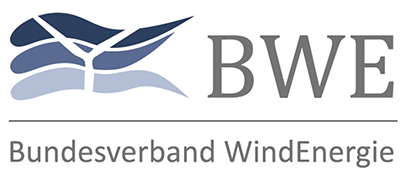Continued operation of wind turbines after at end of EEG-funding
From 2021 onwards, the German wind industry will no longer be solely focused on the construction of new turbine capacities, but for the first time on large scale dismantling, replacement and long-term operation without subsidies. Wind turbines with a total output of about 4,000 MW will then reach the end of the funding period (20 years) and will no longer benefit from the federal feed-in tariff.
Until 2025, an average amount of 2,400 MW per year is going to lose the federal support. If one assumes that most turbines cannot be operated in a profitable way without the feed-in tariff and compares the figures with the federal deployment corridors, which call for an increase of wind energy from 2,800 to 2,900 MW each year, it becomes clear that there is a need for action. Under the current framework conditions, the total capacity of wind energy in Germany is likely to decrease in 2021 for the first time since the Renewable Energy Act (EEG) has been implemented.
In its coalition agreement, one of the federal government’s main targets is to increase the share of renewable energies in electricity consumption from today’s 40 percent to 65 percent in 2030. To achieve this goal, the expansion of onshore wind energy plays a key role. However, many project planners are already facing difficulties when it comes to procedures of approval. In many places, local authorities hesitate to allocate suitable areas and approval procedures are slowing down. Construction projects for new turbines take an increasingly long planning period and are sometimes not realized at all.
Repowering potentials
In addition to ambitious erections, it is therefore more important than ever to include established and widely accepted locations in the considerations in the interests of efficient use of space. Repowering, i.e. replacing old systems with new ones, could be facilitated in many places. This usually reduces the number of plants significantly, while the yield multiplies due to modern plant technology. Interest in using these locations with existing infrastructure within the scope of repowering often exists not only among the respective plant operators, but also among local residents, property owners and municipalities. For locations without repowering options - for example because the areas are outside currently defined priority areas or due to restrictive planning and licensing regulations such as extended distance requirements - continued operation is sometimes the only option for further use of the area and existing infrastructure.
Wind turbines in continued operation also show a considerable benefit for the overall system after the end of their conveying period. They often enjoy a high level of acceptance among the population, make an important contribution to climate protection and conserve resources through the continued use of existing infrastructure. Systems can be operated beyond the calculated service life of 20 years if proof of the suitability of the system and the duration of possible further operation is issued. Due to past technical retrofitting programs, existing systems in continued operation do not pose a problem for network stability.
Fair framework conditions can ensure that operators of plants that continue to operate can assert themselves as market players, open up new market segments and stimulate innovations, for example in the area of sector coupling. Perspectively, the marketing of electricity to large regional customers (so called PPAs) and sector couping can also play an important. The legislator has to remove exiting boundaries to use these potentials.

